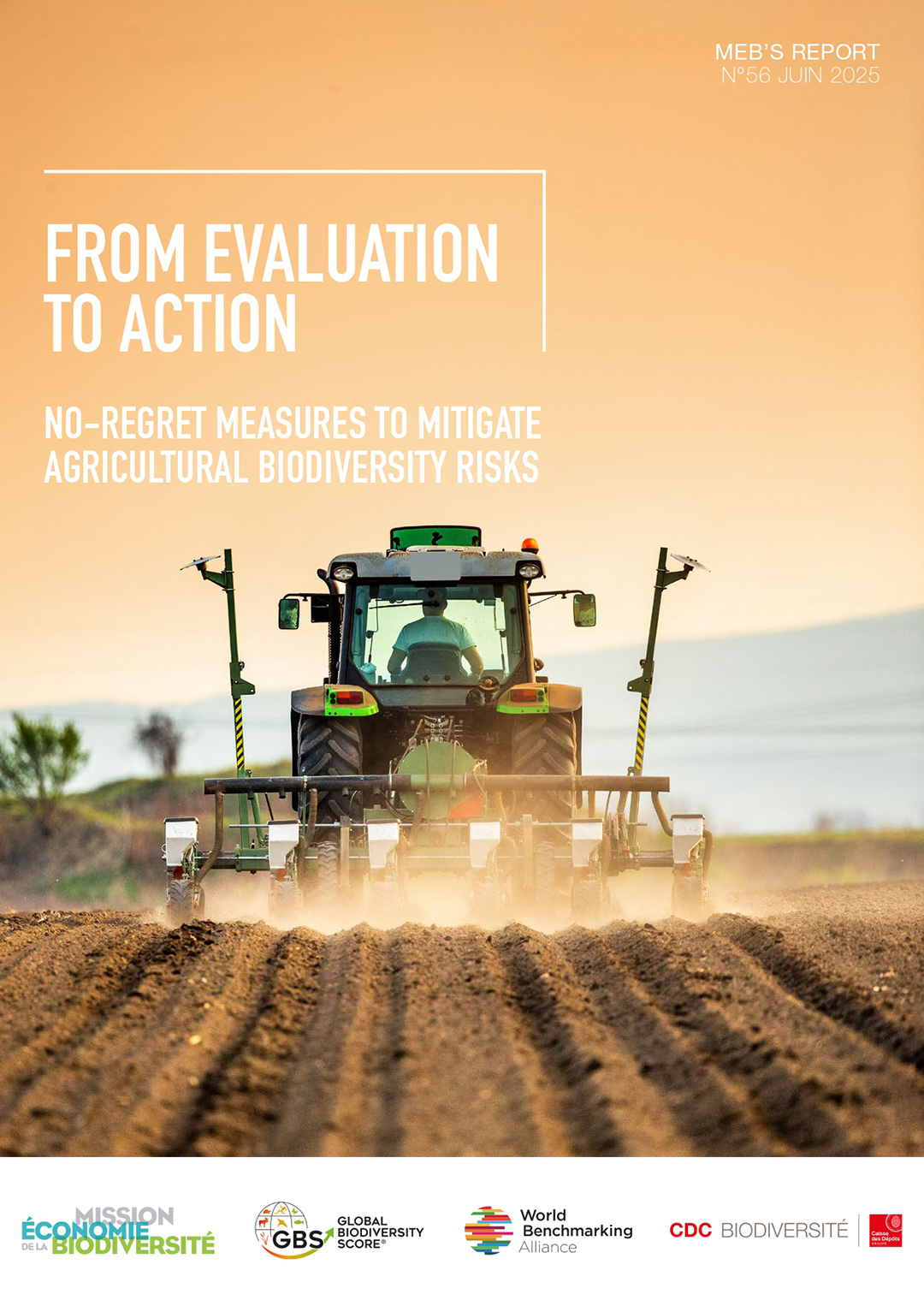Dossier de la MEB n°56

Sommaire de la publication
|
1. Introduction: the complex relationship between nature and agriculture 2. Identifying and managing risks: Food and Agriculture companies fall short 3. First measure: identification of the high-priority sub-sectors and commodities |
4. Second measure: risk assessment based on the analysis of impacts, dependencies and commodities 5. Rising to the challenge: implementing ambitious strategies and setting targets |
RÉSUMÉ
Practical guide to help stakeholders in the Food and Agriculture sector in their first steps toward biodiversity-related risks mitigation.
How can businesses, investors, and public authorities identify and mitigate biodiversity-related risks in the Food and Agriculture sector? What are the key industries most exposed to nature-related risks, and how can they take action?
This publication is a practical guide designed to support stakeholders in their first steps toward integrating biodiversity considerations into their risk management strategies. By providing a structured risk assessment framework, it enables companies, financial institutions, and policymakers to evaluate their dependencies and impacts on nature. The guide highlights high-risk sub-industries and commodities, examines key physical and transition risks, and offers concrete methodologies for risk evaluation.
Each section concludes with tailored recommendations, offering actionable insights for public authorities, financial institutions, and businesses alike. These guidelines help stakeholders translate risk assessment into effective decision-making and strategic planning.
With a focus on practical solutions, this guide equips stakeholders with the knowledge and tools necessary to take concrete steps toward reducing biodiversity risks.


